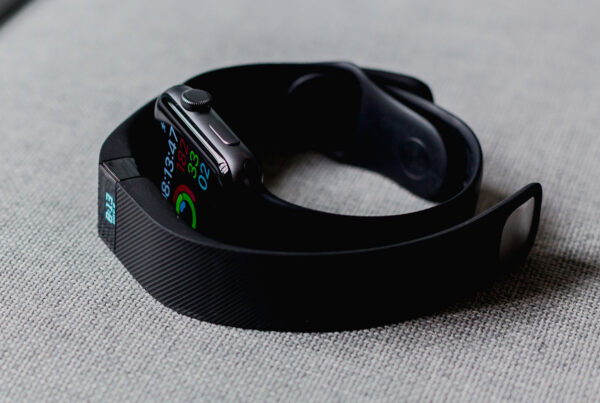Crafting and executing a remote clinical trial in 2022 may be different from how it would have been performed just five years prior due to the the pandemic. In fact, conducting remote clinical trials will be essential to conduct clinical research at all, as travel will be restricted due to the threat of infection from the infectious disease wreaking havoc across the globe. Here are some considerations to keep in mind when conducting and monitoring your remote clinical trial in 2022.
Preparing For Remote Clinical Trials
As remote clinical trials proliferate, healthcare systems will need to make sure they have backup solutions for their monitoring solutions. Remote monitoring solutions that connect between a patient’s medical devices and a clinical trial system are more prone to failure than locally monitored ones. Just like with any other system in your healthcare network, you’ll want to have enough redundancy in place to provide failover capabilities and ensure optimal care for your patients
Conducting a remote clinical trial is somewhat similar to a remote monitoring clinical trial in some aspects, but there are also key differences. Remote monitoring clinical trials allow you to monitor patient health while they are using medical devices at home. Patient input will help generate hypotheses that can then be tested by comparing these measurements with controls in other remote monitoring clinical trials.
Remote monitoring clinical trials typically have fewer variables than standard remote clinical trials and use fewer methods for data collection. However, if you’re considering running a trial that tests multiple treatments against each other or testing many potential variations on one treatment (such as trying different dosages or different frequencies of administering drugs), you’ll need to do more work to make sure those techniques won’t skew your results.
The remote monitoring solution is just one component of a remote clinical trial. You’ll also need to consider how you’re going to handle patient recruitment and enrollments, treatment regimens and implementation, participant adherence, reporting results back to participants and sponsors, handling adverse events or patient-reported outcomes that come up during the trial process, and more.
The best way to ensure your remote clinical trial is a success is by being fully prepared for it before it begins. That includes planning for all contingencies (such as researching what types of communication methods work best in different parts of the world) so you can successfully execute your study throughout its duration.
Remote monitoring clinical trials aren’t just a trend, they’re part of a larger shift in healthcare toward more patient-centric solutions. As more clinical trials use remote monitoring, we’ll have more real-world data on how to treat patients and what their medical needs are. That will allow us to increase efficiency and minimize costs while providing better care for patients around the world.
Performing A Remote Clinical Trial
Conducting a remote clinical trial is only part of managing a clinical trial. Before, during, and after a remote clinical trial you’ll be working with many different people in various capacities, so having a plan to manage those relationships is key.
For example, before enrolling patients, you’ll want to develop an enrollment form that asks for basic contact information but also considers your communications plan – how will participants learn about study dates? What if they have questions while they’re being monitored? Having that kind of structure in place early on will make things run more smoothly later down the line.
The best-laid plans are worthless unless there’s someone making sure everyone follows them, though. If possible, you should assign someone who isn’t an employee of the hospital to monitor day-to-day operations and report back in person (at least once a month) or through regular phone calls and emails to get feedback from one another. This might sound like a lot of work for what amounts to passive monitoring, but it allows for accurate data collection without bias and helps foster better communication. You may even find yourself collaborating on new projects later on!
Remote clinical trials aren’t just a way to save money on travel costs, either. When you don’t have to worry about researchers physically being at a site, you can run trials in places that otherwise wouldn’t be feasible – think about remote research stations in Antarctica or areas without nearby hospitals.
You can even set up multiple remote sites around the world and have them interact, creating a network of groups that can learn from each other and even share data with one another if they all consent to it. So while running an effective remote clinical trial is still challenging, having so many benefits means more companies will want to get involved. As long as your monitoring plan works well, you’ll be ready for them!
What’s more, as your team has already likely observed, a remote clinical trial often doesn’t just save time and money but it can also increases patient trust. When participants know that their data is being collected accurately by someone who isn’t getting a different version of events from another person in your facility, they feel safer about participating and are thus more likely to stick with you throughout their treatment. That means fewer dropped-out patients for you and increased repeat business for your clients.
What To Do If The Patient Is Failing To Take Their Medication
The first step in working with a non-compliant patient is to find out what’s causing them to stop taking their medication. What are they concerned about? Is it the cost of the medication? Are they having side effects? Is it that they don’t think it is helping them and so want to stop using it altogether? Once you know what issue(s) your patient is facing, then you can create an action plan that works for them and help get them back on track. For example, if someone is worried about cost, let’s say, you could recommend other affordable alternatives (e.g., generic versions of medications) or put together a payment plan so there are no more barriers to treatment.
Of course, there may be some instances when you need to move a patient to a new treatment. The key is to make sure they’re in agreement and that you first try other things such as alternative medication or dosage adjustments. Consider meeting with your patient in person or by video call and talking about what’s working for them, what isn’t, and what you both can do to improve their health moving forward. If all else fails, be sure to discuss switching treatments with your supervisor or case manager so they can help if needed. By addressing non-compliance head-on, you can quickly resolve any issues and get your patients back on track.
If you’re concerned about side effects and think it might be leading to non-compliance, then it’s important to be honest and upfront with your patient from day one. Even if a patient has other health issues, medication may still help them manage symptoms and work better in their life. Don’t make them feel like they need to lie or hide things from their doctor or loved ones – instead, make them feel safe to talk openly with you about their concerns. You can also look at changing doses or possibly starting new medications that have fewer side effects.
There are a variety of reasons why a patient may be non-compliant and by addressing them early on, you can help get them back on track to managing their health and leading healthier lives. The key is to provide education and resources that will help your patients take their medication as prescribed – so they can live their best lives.
Benefits of Remote Clinical Trial Monitoring
Remote monitoring is a cost-effective and efficient way to conduct clinical trials. There are multiple benefits that make remote monitoring more appealing than other methods of clinical trial management, including:
- Cutting down on time spent with medical visits
- Reducing costs and risks
- Enabling more trials to take place in underserved areas
Remote monitoring will allow researchers to increase the quality of care while decreasing costs. It can be used to provide high-quality clinical trial data at lower costs, which will be attractive to pharmaceutical companies who need better data but don’t want to spend money on expensive monitoring methods. The impact will be great for developing countries as it makes it possible for them to participate in international research initiatives and provides access to lifesaving drugs.
Studies show that having remote access to doctors, nurses, and medical assistants can provide a higher level of care than what is available in some areas. With remote monitoring, participants are able to communicate directly with their doctor without having to travel a long distance or wait for long periods of time. This allows them to get help faster and reduce complications that can arise from being out of touch with your doctor for extended periods of time.
It can monitor participants 24/7 and collect valuable data, including information about food intake, physical activity, behavioral data, and medication compliance. Many of these parameters are related to chronic diseases such as diabetes, heart disease, and depression—this continuous monitoring allows researchers to evaluate how participants’ health changes over time. This will help them gain a better understanding of how patients interact with new medications or therapies so they can design better interventions in future trials.
Challenges of Remote Clinical Research
The challenges associated with remote clinical research include ensuring patients have Internet access, ensuring bandwidth can accommodate online sessions, maintaining adequate patient confidentiality and anonymity in a distributed environment, and creating procedures for handling surrogate endpoints or monitoring emerging treatment patterns that are not adequately addressed by current state-of-the-art technology or formal statistical methods. While these challenges appear daunting, they are manageable and ultimately surmountable. However, in order to manage them effectively, sponsors must carefully consider what exactly is needed to ensure proper remote monitoring of their clinical trial once it has been conducted.
Another challenge of remote clinical research is ensuring quality data. Because conducting remote clinical research requires a greater effort than traditional in-person clinical trials, sponsors must be sure to set higher standards for data collection and adhere more rigorously to these standards throughout all phases of remote clinical research.
If lax procedures are allowed to be established, then sponsors risk harming future efforts at remote monitoring by giving a bad name to an otherwise highly innovative process that holds great promise for many types of patients and diseases. To ensure quality data collection in any remote trial, sponsors should establish strict protocols at every phase of their remote clinical trial. For example, they should only hire properly trained personnel who understand what metrics need to be collected and how they can be collected in an efficient manner while still providing accurate results.
Privacy is another challenge of remote clinical research. Your facility will need to make sure you are ensuring patient confidentiality and anonymity. For all patients, particularly those who are participating in a remote clinical trial, it is crucial that their identity remain confidential and anonymous at all times.
For example, patients who enroll in a remote clinical trial involving HIV may be afraid of contracting HIV or stigmatized because they are members of an at-risk group; thus, their identity must be kept secret so they do not face any adverse consequences from disclosing their status as participants in a remote clinical trial.
To help ensure appropriate security measures are established for every aspect of every remote clinical trial, sponsors should consult with regulatory authorities about protocols for keeping medical records private during data collection and for transferring them to centralized storage facilities after trials have been completed.
Performing Remote Monitoring Clinical Trials
If you want to monitor your patients’ vital signs remote, you will need to use either telemedicine equipment or software such as WebEx or Skype. You will also want to have nurses able to follow your trial protocol remotely and check on your subjects even when you are not available.
Studies have shown that nurses can perform most of these functions just as well from a remote location as they can in person. You should verify that nurses or other staff can follow all protocols from a remote location before selecting monitoring equipment. If something goes wrong, you may want them to be able to call an ambulance or other emergency medical services on their own. Finally, remember that in areas where infrastructure has been damaged by disease outbreaks, power outages may occur frequently.
If you plan to conduct your clinical trial in rural areas, consider that some subjects may have limited access to a mobile phone network or high-speed internet. This can make performing remote monitoring difficult, but it is not impossible. You can buy satellite phones and satellite internet plans to overcome these limitations. They are expensive and may have slow connections, but they will work if necessary. Finally, remember that in areas where infrastructure has been damaged by disease outbreaks, power outages may occur frequently.
You should also be aware of common problems that occur during a clinical trial and how to handle them. For instance, if subjects tell you about symptoms or other adverse events, you may be able to monitor them remotely and diagnose these incidents before they become serious issues. You may also want to consider putting protocols in place for dealing with deaths among participants in remote monitoring trials as they would be any other study subject.
Are Remote Clinical Trials as Valuable as In-Person Clinical Trials?
While some are still a bit hesitant about remote clinical trials, many feel that they are equally as valuable as in-person clinical trials. Many people who were onsite at remote clinical trials report being very impressed with how it was conducted. They felt like they had all of their questions answered and that they were informed throughout every step of their trial.
Now while they will probably never be able to replace in-person clinical trials, there is enough evidence to support their use during times when it is too dangerous or impossible for patients to travel off-site.
It’s important to note that just because a clinical trial is conducted remotely, it doesn’t mean that it is low quality. While in-person clinical trials are still thought of as being more reliable, there is plenty of evidence to support remote clinical trials as being very high quality. Almost all report that they felt like they were treated with respect and that their privacy was protected during their remote clinical trial. Conducting a remote clinical trial involves creating systems and strategies to ensure that you are still getting accurate results.
Remote clinical trials have come a long way and it’s important to remember that they were designed for a reason. They can be used in times when it is not safe or feasible for patients to travel off-site. Conducting them correctly involves creating high-quality systems and being fully prepared to monitor results and ensure safety throughout every step of your trial.








